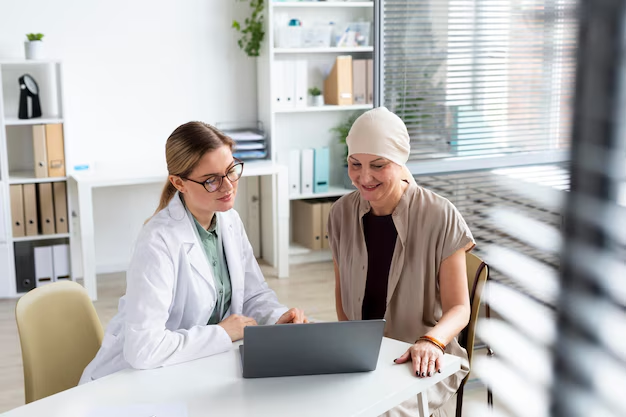Understanding Leukemia: Can It Spread from Person to Person?
When faced with a diagnosis like leukemia, a flood of questions naturally follows. One of the most pressing concerns people have is whether leukemia is contagious. The short answer is no, leukemia is not contagious. However, there's much more to understand about what leukemia is, how it develops, and what implications it has for patients and those around them.
What Is Leukemia?
To better grasp why leukemia is not contagious, it’s important to know what leukemia actually is. Leukemia is a type of cancer of the blood-forming tissues, including the bone marrow. It's characterized by an overproduction of abnormal white blood cells, which can interfere with the body’s ability to fight infections and prevent various blood-related functions.
Types of Leukemia
There are several types of leukemia, primarily categorized based on how quickly they progress (acute or chronic) and which type of blood cell is affected (lymphoid or myeloid). The main types include:
- Acute Lymphocytic Leukemia (ALL)
- Chronic Lymphocytic Leukemia (CLL)
- Acute Myeloid Leukemia (AML)
- Chronic Myeloid Leukemia (CML)
Each type comes with its own set of characteristics, treatment options, and prognosis.
Why Leukemia Isn’t Contagious
Cancer, including leukemia, is the result of genetic changes within a person's cells. These changes lead to uncontrolled cell growth and are not caused by infectious pathogens like bacteria or viruses that could spread from person to person. This genetic mutation process is internal, beginning within the individual's own DNA, rather than from external transfer.
Misunderstandings About Leukemia Transmission
The question of contagion arises partly from misunderstandings or myths. It is essential to dispel these misconceptions:
- Shared Environments: Being around someone with leukemia, sharing food, or using the same facilities does not lead to the spread of leukemia.
- Recurrence Myths: Some may mistakenly believe that leukemia can relapse in friends or family through exposure. However, recurrence is related to individual factors, not contagion.
How Is Leukemia Diagnosed?
Diagnosis involves several tests and examinations to confirm the presence and type of leukemia. These may include:
- Blood Tests: To check levels of white and red blood cells and platelets.
- Bone Marrow Test: A sample of bone marrow is examined for abnormal cells.
- Genetic Tests: To identify specific genetic mutations or abnormalities related to leukemia.
Treatment Options for Leukemia
While leukemia is not contagious, it is indeed treatable. Treatments vary based on the type of leukemia and the individual's health status. Common treatment options include:
- Chemotherapy: The primary treatment for most types of leukemia, using drugs to kill cancerous cells.
- Radiation Therapy: Uses high-energy beams to target and destroy cancer cells.
- Stem Cell Transplant: This involves replacing diseased bone marrow with healthy cells.
- Targeted Therapy: Focuses on specific vulnerabilities in cancer cells.
Living with Leukemia: Management and Support
Living with leukemia requires comprehensive management and a supportive environment:
- Regular Monitoring: Routine check-ups and blood tests are crucial.
- Healthy Lifestyle: Balancing diet, exercise, and rest can support recovery.
- Support Networks: Emotional and psychological support from friends, family, and patient groups can be invaluable.
The Role of Genetics and Environment
While leukemia isn't contagious, both genetics and environmental factors contribute to its development:
Genetic Factors
Individuals with certain genetic disorders or mutations may have a higher risk of developing leukemia. Family history can also play a role.
Environmental Influences
Certain environmental exposures, like radiation or chemical exposure, have been linked to increased risk, though they do not make the disease contagious.
Leukemia and Public Interaction
For those curious about interacting with leukemia patients, there is no need for isolation or fear of contracting the disease. Instead, focus on supportive care and empathy. Building awareness helps dispel myths and encourages inclusivity.
Busting Myths: Common Questions Answered
Can Medical Personnel Catch Leukemia from Patients?
Medical personnel are not at risk of catching leukemia from patients. Standard precautions are in place to protect both patients and healthcare workers from infections, but leukemia itself is not among those.
Does Donating Blood to a Leukemia Patient Carry a Risk?
Blood donations are meticulously screened, and donating blood does not transmit diseases like leukemia. It is a safe practice that can significantly help leukemia patients.
Is There a Link Between Viruses and Leukemia?
While some viruses can increase the risk of cancer due to their impact on cells, they do not cause leukemia directly. It’s crucial to understand the distinction between risk factors and direct causation.
Conclusion: Empowerment Through Knowledge
Understanding that leukemia is not contagious removes unnecessary barriers and stigmas, allowing us to focus on valuable aspects like support and treatment. By fostering awareness and spreading factual information, we empower patients and families with confidence and clarity.
Practical Takeaways
Let's sum up the key points for clarity and future reference:
- ✅ Leukemia is not contagious. It results from genetic mutations within the body.
- 👩⚕️ No risk in social settings: Being around leukemia patients involves no health risk.
- 🧬 Genetics play a role: Family history and genetic conditions can increase risks.
- 🎗️ Support is crucial: Emotional and psychological assistance are vital for patients.
- 💉 Safe to donate blood: Blood donations do not transmit leukemia and are safe.
With awareness and accurate information, we can support leukemia patients with empathy and enhance their quality of life. Understanding dispels fear, and compassion builds bridges.

Related Articles
- Can Leukemia Be Cured
- How Do Cats Get Feline Leukemia
- How Do They Test For Leukemia
- How Do You Get Leukemia
- How Do You Test For Leukemia
- How High Are Monocytes In Leukemia
- How Is Feline Leukemia Spread
- How Is Feline Leukemia Transmitted
- How Is Leukemia Diagnosed
- How Long Can You Live With Chronic Lymphocytic Leukemia